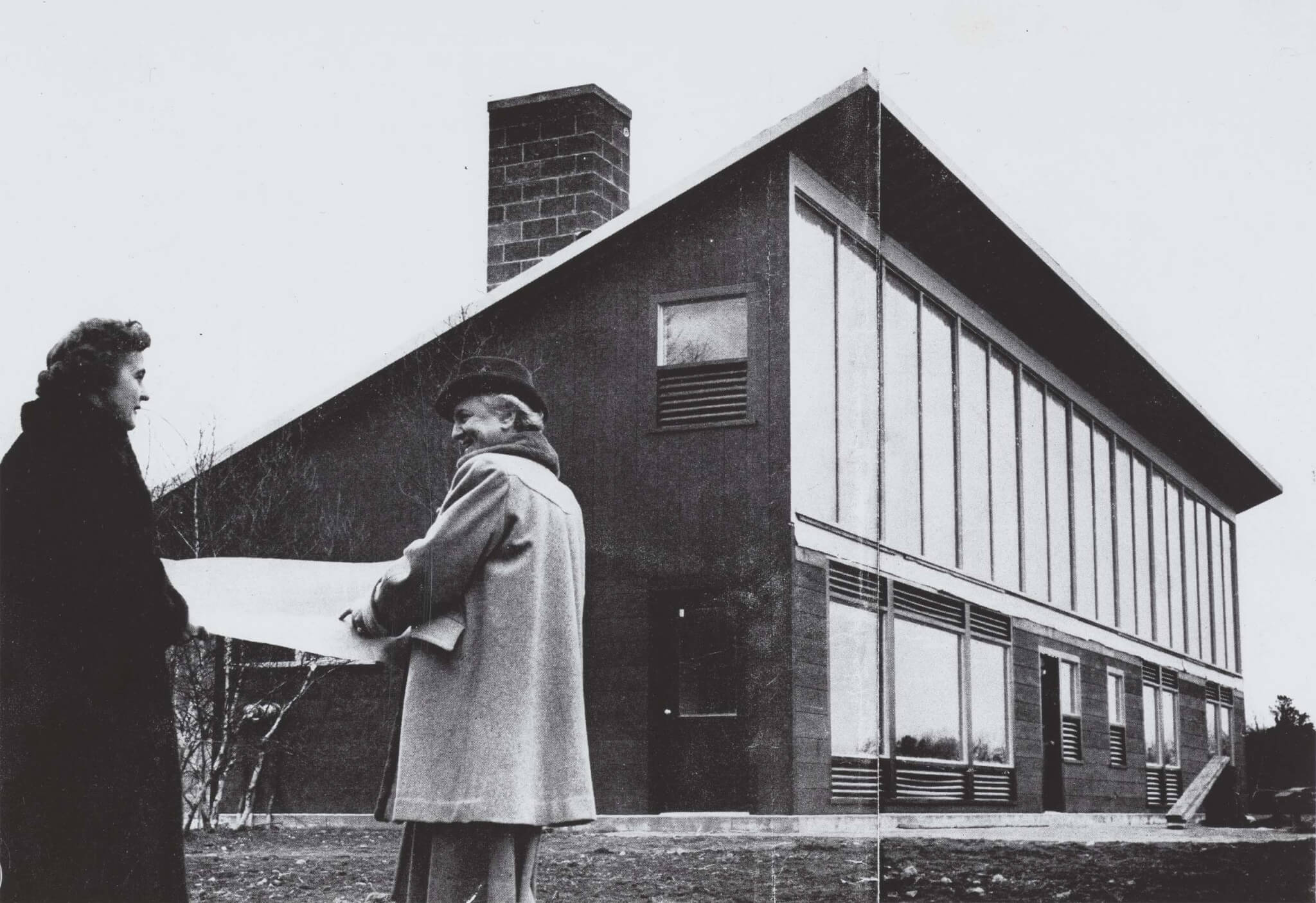A model of Frank Lloyd Wright’s Fallingwater, a protest on Indigenous land over the construction of a dam, and Buckminster Fuller’s 1967 World Game are among the objects and research that will presented at the Museum of Modern Art’s (MoMA) upcoming exhibition Emerging Ecologies: Architecture and the Rise of Environmentalism next fall.
The forthcoming show will be the first exhibition curated by the Emilio Ambasz Institute for the Joint Study of the Built and the Natural Environment, an entity within MoMA’s Department of Architecture and Design established in 2020 to organize curatorial programs and research initiatives on topics related to the built environment, including cities, landscapes, sustainability, and environmental justice. (Recent programming includes the speaker series Material Worlds.) The show will collect prior work on ecological and environmental concerns spanning from the 1930s to 1990s, including models, photographs, diagrams, sketches, and other archival materials including posters, flyers, and articles.

Emerging Ecologies is organized by Carson Chan, director of the Emilio Ambasz Institute for the Joint Study of the Built and Natural Environment and curator within the Department of Architecture and Design, with Matthew Wagstaffe, an Ambasz Institute research assistant.
“The ambition of the show is different for the various audiences I imagine would see it,” Chan told AN. “For the general museum audience, the aim is to inspire them with the knowledge that architects have been deeply engaged with environmental and ecological issues for at least a century, and that the incredibly innovative work architects are doing today to confront our current climate crisis has a rich history.”
“For architects and scholars, the show proposes what we’re calling Environmental Architecture as a counter movement, or anti-movement to the aesthetic and ideological dominance of modern architecture,” he continued. “Though there is no formal or aesthetic consistency amongst the work of the contributors to the show, they all hold environmental and ecological issues at the forefront of their practices.”
The exhibition’s objects and research will be presented under five thematic headings: Environment as Information, Environmental Enclosures, Multispecies Design, Counterculture Experiments, and Green Poetics.

In the Environment as Information section, Buckminster Fuller’s World Game, a simulation for understanding the distribution of raw materials, and Beverly Willis’s Computerized Approach to Residential Land Analysis (CARLA), a software developed to analyze land for its development potential, function as case studies for how technology has played in a role in taking on challenges related to the built environment.
Environmental Enclosures will present drawings from NASA’s Space Settlements: A Design Study, a research project from 1975 that studied resource consumption and availability on Earth through testing programs performed in outer space. Work by the The New Alchemy Institute on a series of off-grid structures built on Prince Edward Island will feature as part of Counterculture Experiments to demonstrate alternative ways of living.

In Multispecies Design the research will look toward animals, with a focus on Ant Farm’s project Dolphin Embassy, a floating research lab conceived as a place to study human and aquatic mammal interactions. And in Green Poetics, the focus will be less on the practical elements of environmental design presenting works by James Wines and Emilio Ambasz that showcase its beauty.
Beyond built works, Emerging Ecologies, will exhibit the power of resisting construction, as exemplified through archival materials from the 1981 Orme Dam protest, when the Yavapai Nation, located near present-day Phoenix, opposed the construction of a dam that would have flooded Yavapai land.
Alongside archival materials, Emerging Ecologies will also present seven newly commissioned audio pieces from some of today’s leading architects and researchers: Mae-ling Lokko, Jeanne Gang, Meredith Gaglio, Charlotte Malterre-Barthes, Amy Chester, Carolyn Dry, and Emilio Ambasz. The recordings will center on what architects can do to face climate change and address topics such as resource depletion, overpopulation, and pollution.
“In many ways, we see this exhibition as part one of larger discussions about architecture’s historic, present, and future engagement with the environment. This show, a necessarily selective survey which focuses on American practices from the 1930 to 1990s, helps establish the historical efforts made by architectural practices to address humanity’s impact on natural systems, and only after this can we look at present and future efforts in an informed way,” Chan added.

“Part of what I want to do with the Ambasz Institute is to remind the architecture community that architecture is already an environmental discipline,” Chan said. “The current interest in sustainability does not mark an ecological turn as some might say, but a return to architecture’s fundaments.”
Emerging Ecologies: Architecture and the Rise of Environmentalism opens on September 17 and will be on view through January 20, 2024.











